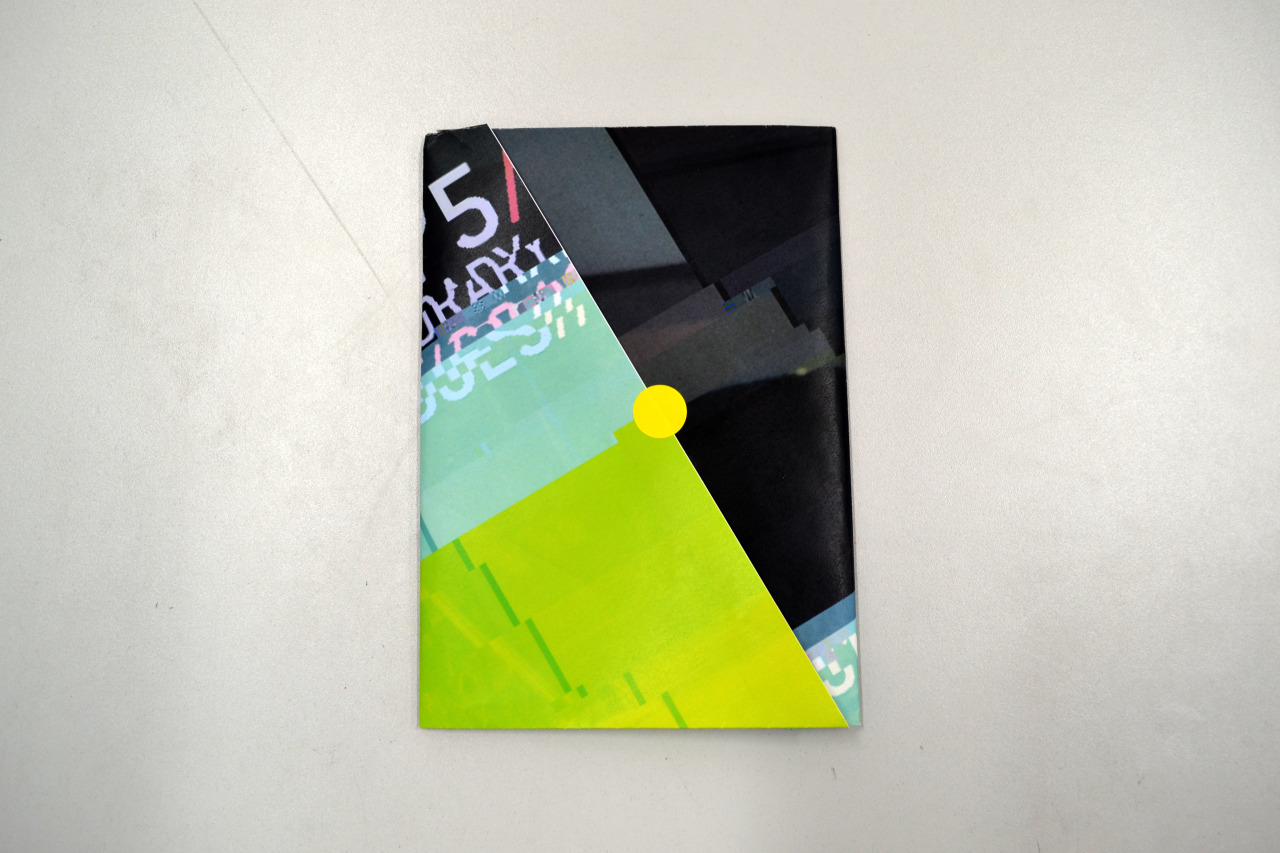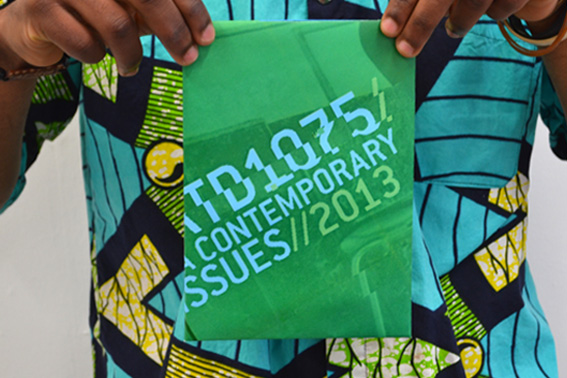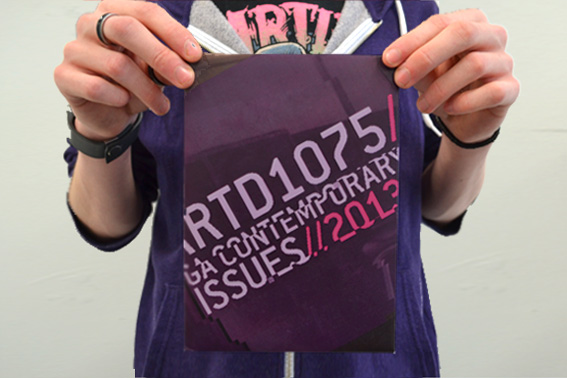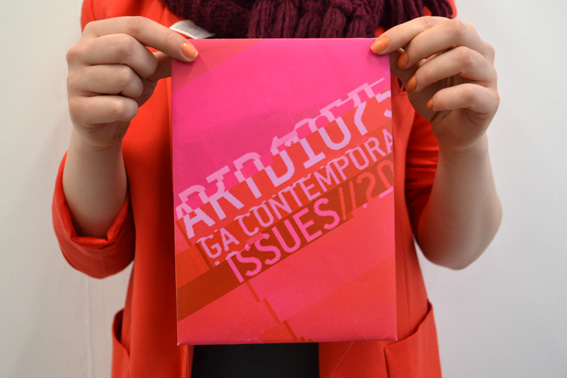We asked our year 1 students Karo Cichon, Grant Norris, Corey Dixon and Sylvester Siani AKA Vektr-Design to re-design our module handbook and with the help of some pretty toxic looking donuts / energy drinks they delivered this stunning piece of design. Sincere thanks for the hard work you all put in to this!!!
Here Grant Norris gives his thoughts on the project: ‘As a group, we really wanted to experiment with the idea of a “handbook” and create something unconventional. Opposed to a group of A4 pages stapled in the upper corner, we aimed to produce something that our peers would WANT to hold on to.
We actually came up with the glitch idea when using Photoshop to output an image file and the JPEG became corrupt, causing elements of the image to turn odd colours. We tried to replicate this glitch again using different images, though this time it was forced, we realised we could create many different glitched images from one original. This way each individual student could have a unique poster that echoed the digital themes in the module and held the individual lecture postcards inside.
When it came to the layout of the content itself, finding the balance between legibility and aesthetic value was arguably the area where we most required the knowledge and guidance of our tutors, but this allowed us to create a well rounded finish that we couldn’t be happier with. Not only have we produced a handbook that we are proud to have our names on, but we have also found the experience hugely beneficial!’


Below Cui Su the Module leader gives a bit more detail about this module, which aims to inspire and inform the stuff we do in the studio by exploring a range of contemporary issues:
‘As designers, illustrators, photographers and motion graphics designers, you are what Pierre Bourdieu calls “cultural intermediaries”, which is a fancy way of saying that you are the important people who contribute to the cultural content of this wonderful world that we live in. You are not simply making beautiful things to look at; as graphics students you have audiences, users, consumers, readers who have a rich media environment.
Developments in digital technologies means that designers increasingly have to work with screens – phones, tablets – along with traditional analogue, like print. In other words, you need to become amphibians – yes you heard me right, you need to be able to thrive both online and offline. Furthermore, it also means that what you produce needs to be strategic – it must be content driven in order to engage with people’s brains as well as eyes. This is what contemporary issues is all about.
On this module, you will learn to intellectually engage with not only design artefacts, but also the debates surrounding their production, distribution and consumption. Some of these include: the impact of electronic publishing, globalization, remix practices, creative commons, form, function and new reading practices.’ Full handbook download


